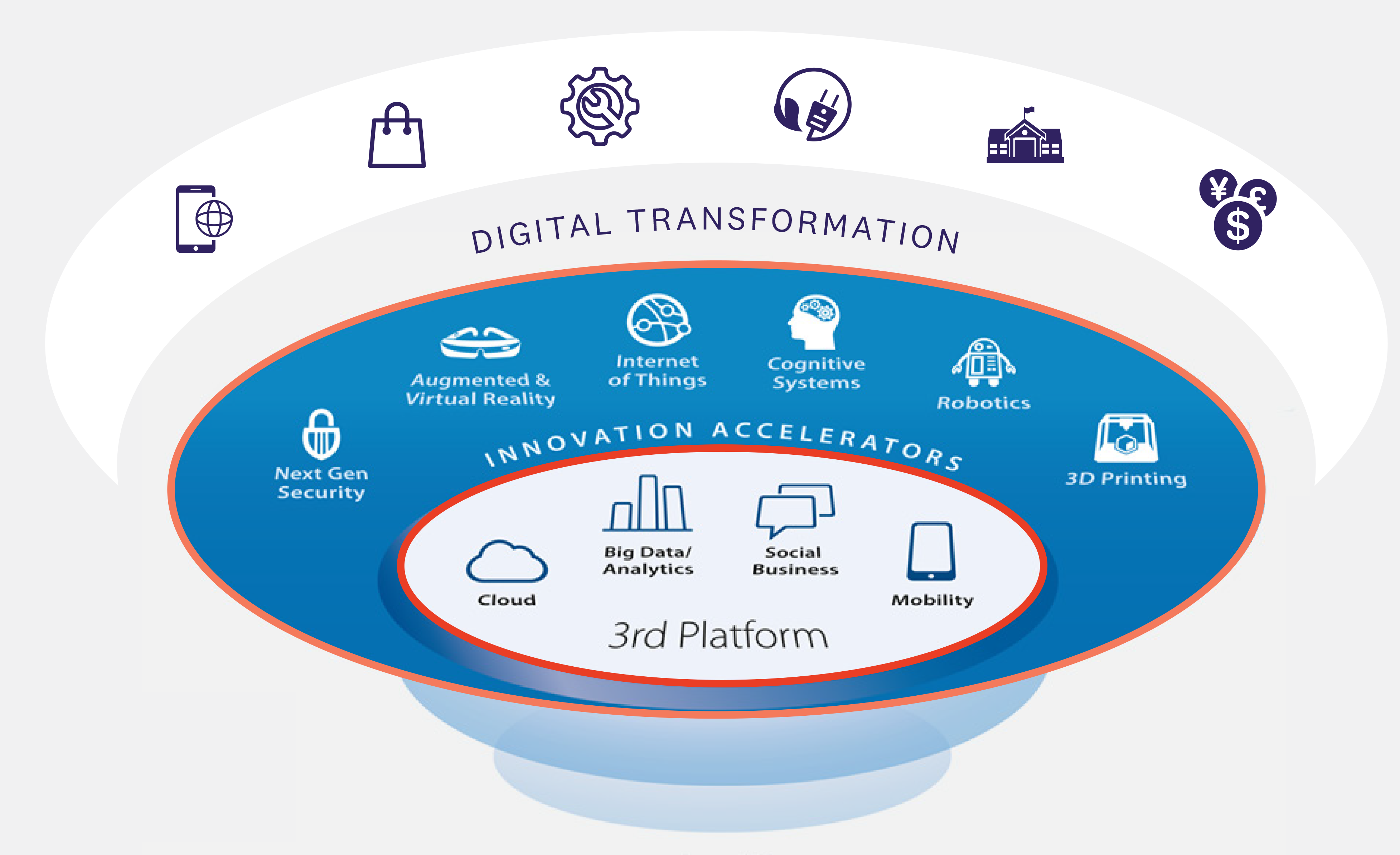Putting people first is key to digital transformation success
Why focusing on user experience is key to get the true benefits of the third platform
A couple of years ago, the International Data Corporation (IDC) introduced the third platform as the third revolution of computing. Striving for innovation, organizations are investing more in the technology forces that are driving the third platform: cloud, big data/analytics, social business and mobility. As stated by IDC, the core element of the third platform is ‘bringing IT closer to the core of business activities and the workplace’. Where do organizations currently stand regarding this process?

We’re partly there, but not fully yet
The market is not homogenous when it comes to digital transformation. Some companies are running far ahead, while others are lagging behind. As William Gibson would say: ‘The future is already here, it's just not very evenly distributed’. In general though, organizations have come to the point where they are shifting towards the Cloud and have started collecting a lot of big data. However, apart from collecting and analyzing this data, the next step of applying these insights to the business - helping to get the most value out of it - has not been taken yet by most organizations.
Making correlations
Take for instance a meeting room in which a video collaboration system is in use. Your organization could collect all sorts of data about this system, such as how often it is being used, at what time, how people are using it and which features are most popular. By now we’ve come to the point that systems can not only gather multiple forms of data, but also make correlations between them. In the past, systems operated separately, these days they are easier to integrate, which adds more value to the data you collect. The benefits of the third platform really come to life when these insights are being used to make improvements to the workflow and to the room in general. For example, when analysis shows that wireless sharing in this meeting room is hardly ever used, one can question its use but that is not always representative of the full story. Perhaps, employees were trained insufficiently or incorrectly on how to use it, or looking at operational patterns, the design could be suboptimal. Drawing these conclusions can help you make improvements and add value to the system on a continuous basis.
.jpg?width=2818&name=Kinly%20Infobrief%20Image%20(1).jpg)
Focus on people first
Implementing improvements based on data and insights should always be people-focused. The possibilities of technology are endless, but we should not forget that technology is first and foremost designed for the people that are using it. Your technology could be the best on the market and have great potential benefits for users. However, if your system is too complex for an end-user in terms of usage, they will never experience the benefits your solution could offer. Basically, the less options you offer or functions you display, the easier a system is to use. Besides, for an end-user the ‘omni-experience’, as IDC is calling it, plays an important role. The technology an end-user is using should seamlessly work across multiple devices or services. And different sort of functionalities, such as video, chat or mobile should be interchangeable. The end-user simply does not care about which technology they are using, or which brand is supplying it. All they care about is a task to perform. The last thing you want as a vendor is people avoiding your technology, being afraid something could go wrong or frustrated something doesn’t work properly. Technology should be supportive and not result in frustration or reluctance to adopt. This won’t happen as long as you keep your focus set on the end-user experience first and foremost. Doing that means you have to understand everything about the unique role communication and collaboration play in that experience, especially since the physical workplace is shifting towards a hybrid virtual workplace.









